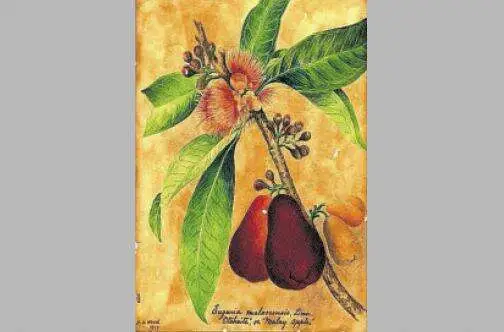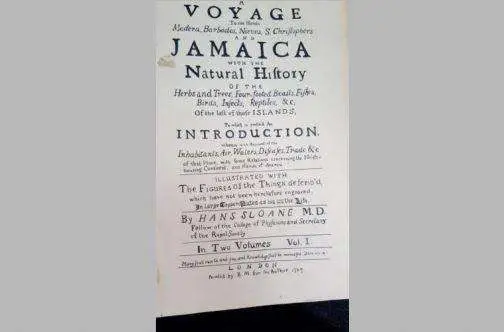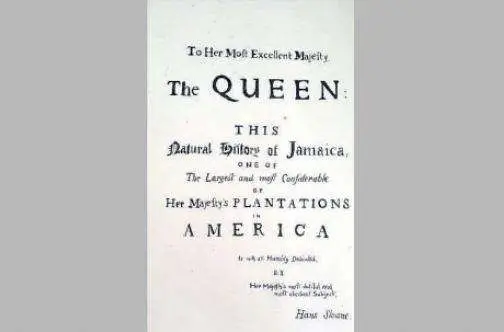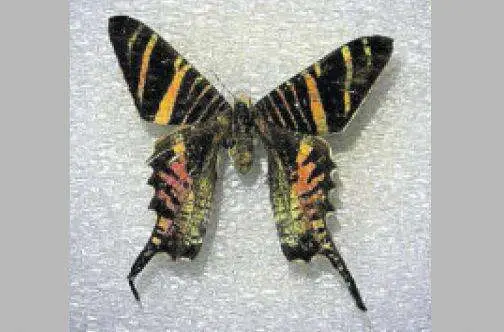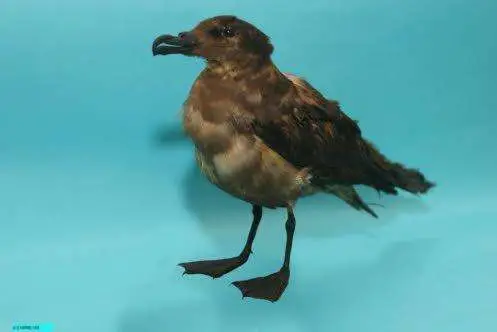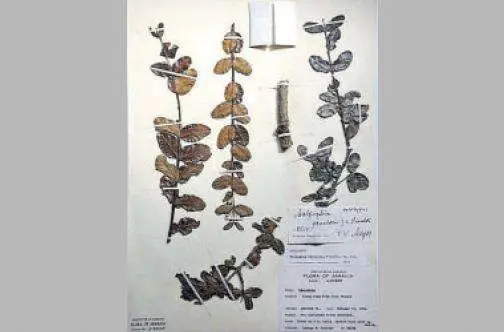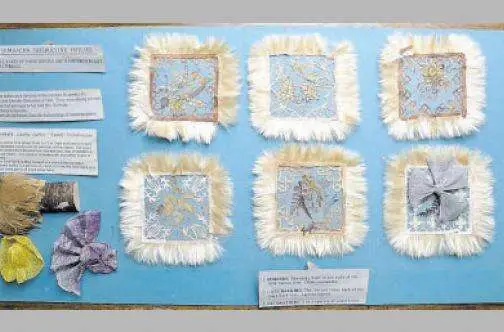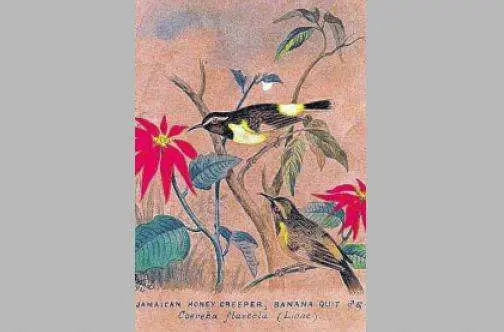
Jamaica’s rich fauna and flora
The Natural History Museum of Jamaica (NHMJ) is a division of the Institute of Jamaica which was established in 1879 by Governor Sir Anthony Musgrave for the “encouragement of literature, science and art”. The NHMJ had inherited the major part of a natural history and archaeological collection from the Royal Society and this was the core from which the NHMJ grew.
By 1881, a small natural history museum was already established at the institute. The museum contained “within its walls, properly named examples of all species of natural history objects occurring in the area, whose fauna, flora, geology and anthropology it is considered to represent” in the hope that it would arouse interest in Jamaican biota. There were “cases of dried plants, stuffed birds, sea shells, animals preserved in alcohol or formaldehyde and, by 1896, there were two cases of insects”.
The NHMJ is a place full of historical details, legend, and folklore associated with Jamaica’s rich and diverse flora and fauna. The museum is home to an extensive collection of preserved plants and animals found in Jamaica and the wider Caribbean. There are three main collections, in the museum, the Herbarium, the Zoological collections and the Science Library. These collections are used as a primary source of information and data for researchers of all types who are interested in the natural and biological resources of Jamaica. Some interesting collections and artifacts from the NHMJ include:
1) The Wood Sample Bookshelf:
This impressive collection was produced in 1891 by the then Public Works Department for the Jamaica Exhibition of 1891, which was held where The Mico University College and Wolmer’s High Schools are today. The piece exhibits wood samples from trees indigenous to Jamaica which were all meticulously cut into the shape of books, labelled, organised and housed within a wooden book case. With Jamaica being the land of wood and water, this piece exemplifies self-identity and pride in our natural history. The sheer artistic yet practicality of the piece celebrates the innovativeness and creativity of the people.
2) Doilies made from Lace Bark
The Doilies housed in the Natural History Museum of Jamaica’s collections were gifts from Mrs Ann Glanville-Darbyshire in 1961. The doilies themselves are made of the inner bark of the Lacebark tree, kapok fibres from the fruits of the silk cotton tree and small ferns. This cottage industry was coordinated by Lady Musgrave, wife of Sir Anthony Musgrave who was Governor of Jamaica. The pieces represent an African retention and heritage. It also illustrates what was a thriving but localised industry of Lacebark extraction and processing. Lacebark was used as raw material for many other products, including rope, footwear and clothing. It was reported in the 1700s that the indigenous Lace Bark tree was utilised by escaped slaves who used it to make apparel of a durable nature. Sir Hans Sloane wrote that he was told that King Charles II had a cravat made of Lacebark presented to him by Sir Thomas Lynch, governor of Jamaica.
3) Proctor Collections
Dr George R Proctor (1920-2015) was an American botanist who was an authority of particular West Indian flora. His regional collections started in 1949 on his arrival to Jamaica. After a lifetime of dedicated fieldwork, his collections included numerous invaluable specimens which are housed within the National Herbarium. They account for approximately 40 per cent of the total collections. His collection is a legacy which is used as reference material for local and international researchers and institutions. Dr Proctor was honoured with the Order of Distinction from the Government of Jamaica as well as a Gold Musgrave Medal for his exceptional contribution to the field of science. Over 30 species of plants have been named in his honour.
4) Specimens of Jamaican Blue Mountain Duck, Pterodroma Caribbaea
This duck was last collected in 1879 and the species is probably extinct. The collections hold two stuffed specimens of this bird and they represent the oldest specimens in the collection. The population of the Blue Mountain Duck was severely affected by the introduction of the mongoose Herpestes auropuntatus in 1872. The mongoose was imported to Jamaica from India by Mr Espeut of Spring Garden (later Crystal Springs, Portland). It was hoped that they would exterminate rats from the sugar cane fields. The animal was successful in its task but it wreaked havoc on native ground-nesting species such as the Blue Mountain Duck and aided in its extinction.
5) Specimens of the extinct endemic moth Urania Sloanea (Sloane’s Urania)
The Zoological Collections hold 15 pinned specimens of this moth last reported seen in 1894 or 1895, but possibly surviving until at least 1908. A specimen of Urania sloanea is one of the oldest specimens in the collections and is collected from 1885.
6) Several specimens of The Giant Swallowtail Butterfly, Pterourus Homerus
The Zoological Collections have 14 pinned specimens of the Giant Swallowtail. These are the second largest butterflies in this hemisphere and the second largest in the world. They are endangered and known only from the Blue and John Crow Mountains and the Cockpit Country.
7) A Voyage to the Islands Madera, Barbados, Nevis, St Christopher and Jamaica with the Natural History of the herbs, and trees, four-footed beasts, fishes, birds, insects, reptiles & c of the last of those Islands (Volume I: 1707, volume II: 1725) by Sir Hans Sloane, who was Governor to the Duke of Albemarle here in Jamaica. Dr Sloane lived in Spanish Town and his collection from Jamaica formed the nucleus of the British Museum.
This 310-year-old book provides a remarkable account of the travels and observations made by Sir Hans Sloane while he was in Jamaica for 15 months (1687-1689). It is bound in leather and contains 156 plates of life-sized illustrations of the wildlife of the islands. The preface is handwritten by Sir Hans Sloane himself. He dedicated the book to Queen Elizabeth I “To her most Excellent Majesty the Queen: This Natural History of Jamaica, One of the Largest and most Considerable of Her Majesty’s Plantations in America.”
8) The Anthony Robinson’s Collection (1700s)
The collection consists of two indexes, three notebooks and approximately 200 drawings. They include a wealth of information about Jamaican plants and animals, some now extinct, as well as the people he met on his collecting trips.
(9) Natural History Collection of Paintings/Drawings/Illustrations
The collection consists of watercolour oil and pencil drawings from several artists. Two of the most prolific in the collections are:
• HQ Levy Collections 1935 -1940: HQ Levy was one of Jamaica’s leading orchid growers and painted not only several varieties of orchids but also many Jamaican fruits and flowers.
• Helen Adelaide Wood Collection: Helen Wood was employed to the Institute of Jamaica, Botany Department in 1912. During her 15-year tenure, she prepared many watercolour paintings on various flowers and birds.
The Science Library is a good place to come to learn about our heritage. Here are some facts you might not have known about some of our favourite crops:
• Breadfruit, Artocarpus Altilis, is native to the southwestern Pacific Islands. In December 1787, 37-year-old Captain William Bligh of the HMS Bounty was tasked to sail to Tahiti and obtain saplings of the breadfruit tree, which were to be distributed throughout the West Indies, where they would be propagated as a source of cheap, fast-growing food for slaves. The saplings were collected and reared until they were deemed to be strong enough to survive the arduous journey to the West Indies. Whilst on the return trip, two weeks after leaving Tahiti, mutiny occurred. On 28th April 28, 1789, Captain Bligh and 17 loyal seamen were cast out at sea in a 23-foot side boat. With rations that could only last five days and no maps and charts, the skilful sea captain was able to sail 3,618 nautical miles to Timor in the East Dutch Indies, surviving six weeks at sea. Most of the mutineers were caught and hanged. Captain Bligh successfully completed his mission of delivering Breadfruit to the West Indies on his second voyage in 1793, when he arrived in Jamaica on the HMS Providence with 347 healthy plants. Next year is the 225th anniversary of the arrival of the plant. Next year’s Heritage Fest, hosted by the Institute of Jamaica, will focus on breadfruit.
• Ackee, Blighia sapida, is named after Captain William Bligh. Ackee was first brought to Jamaica from West Africa along with enslaved Africans on a slave ship in 1778. Captain Bligh was awarded this honour as he carried specimens of ackee to England in 1793 for cultivation and study. The fruit is used as the main ingredient in our National dish of ackee and saltfish.
• The scientific name of the Banana, Musa sapientum, means “Fruit of the Wise Man”. The plant was carried from the Guinea Coast of West Africa to the Canary Islands in 1482. From there the plant was introduced to the Americas and the Caribbean. Different varieties of banana were introduced to Jamaica at different times from different locations. The variety known as Gros Michel was introduced to Jamaica from the island of Martinique in 1835 by a botanist named Jean Francois Pouyat. He planted it at his Bel Air Coffee Plantation in St Andrew from where it spread throughout the island. Other varieties such as the Robusta were introduced in 1909 from Guatemala, the Lacatan was introduced in 1926 from Trinidad, and the Valery was introduced in 1963.
• Escallion is native to China. In Jamaica it is cultivated chiefly in St Elizabeth and St Andrew.
• Pimento, Pimenta officinalis, is native to Jamaica. It is commonly known as allspice as it has a warm spice taste like a mixture of nutmeg, cloves and cinnamon. Pimento is an important ingredient in jerk pork and escoveitched fish.
• Coffee is native to Ethiopia and was introduced to Jamaica in 1732 by then Governor Sir Nicolas Lawes. Jamaica is well known for its Blue Mountain coffee brand.
For all your questions on Jamaican flora and fauna, call or visit the Natural History Museum of Jamaica, 10-16 East Street, Kingston. Tel: 922-0620-6. Email: info@nhmj-ioj.org.jm
